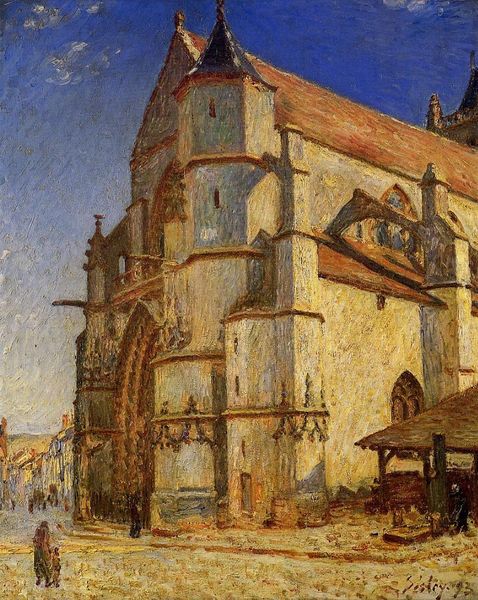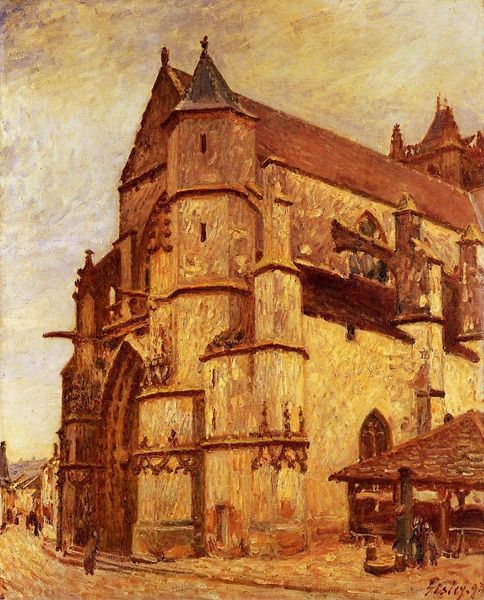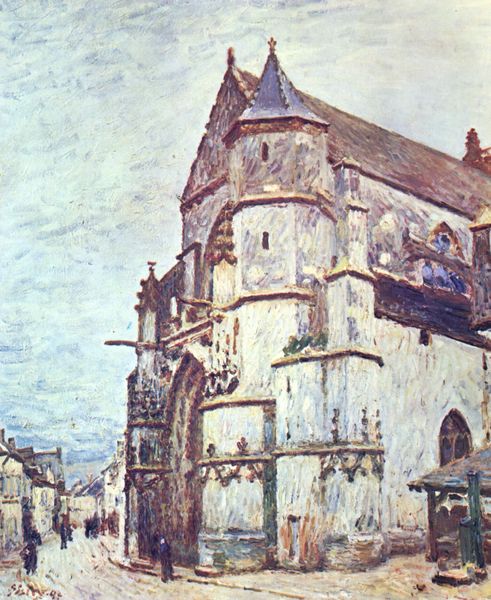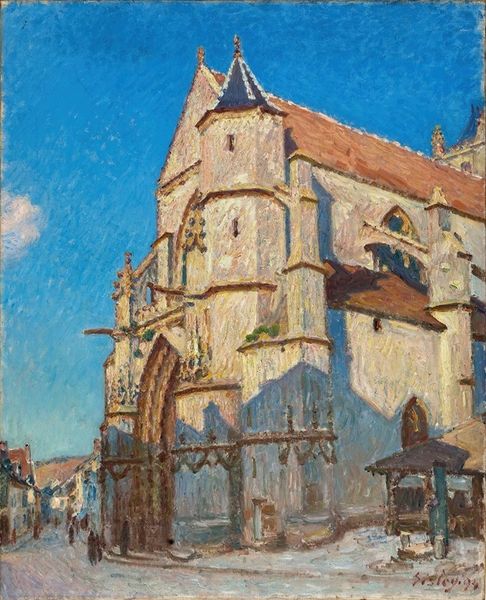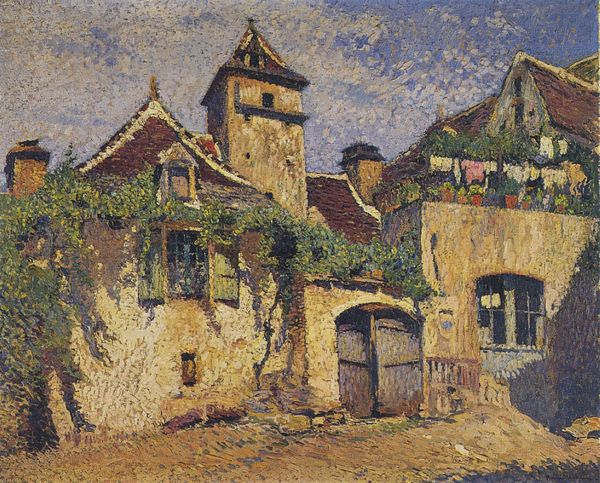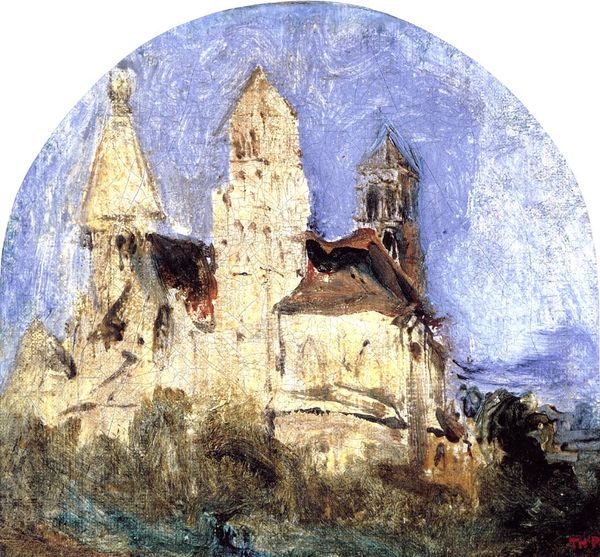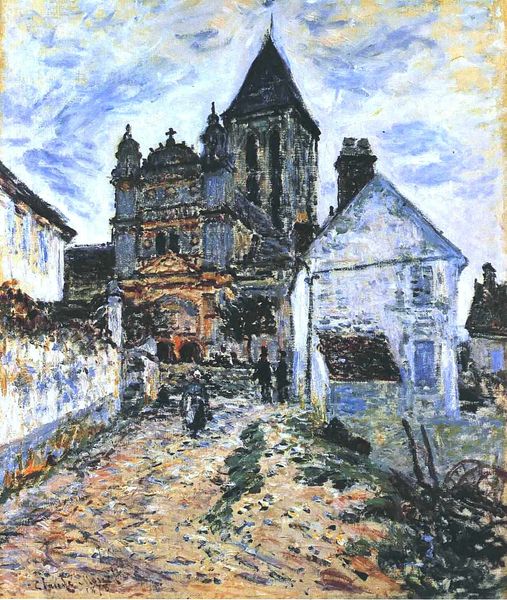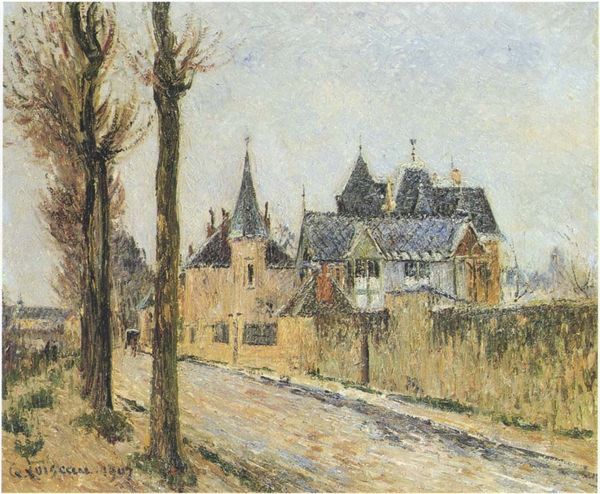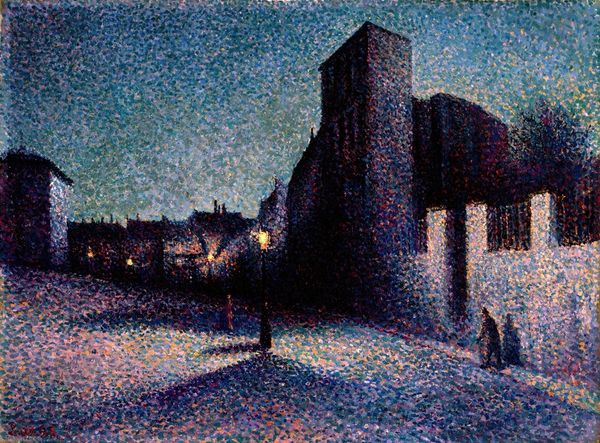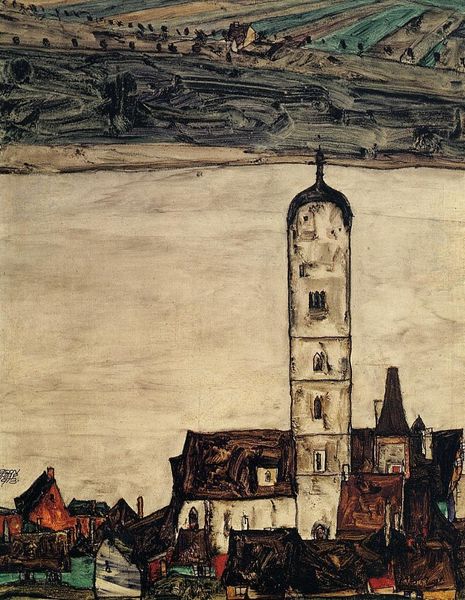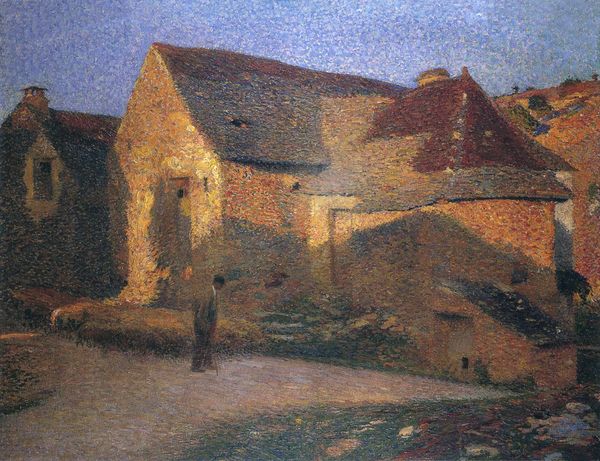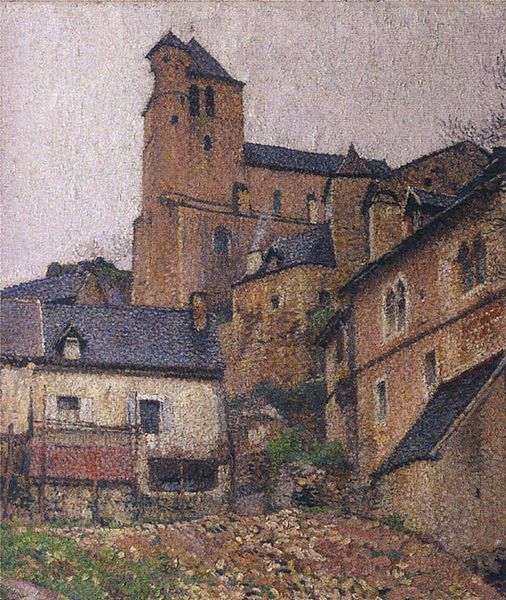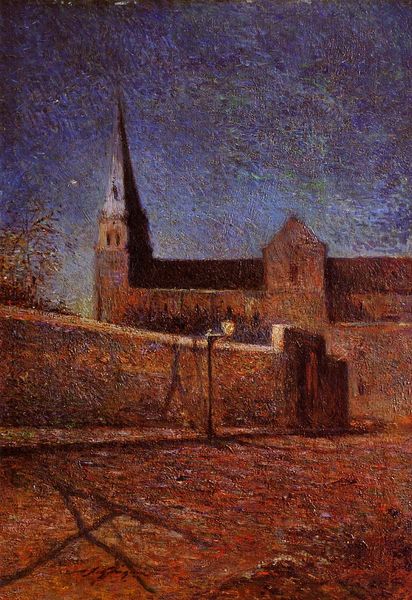
Dimensions: 65 x 81 cm
Copyright: Public domain
Curator: Alfred Sisley's "Church of Moret," painted in 1893, captures a slice of French history through an impressionistic lens. Editor: My first impression is how bright it is. There's a real sense of light hitting the facade of the church, almost obscuring the architectural details. Curator: Right, and the painting shows us how socio-political forces, in this case perhaps a sense of civic pride and the prominence of the Church, shaped Sisley's choice of subject. Editor: But what does it tell us about how Sisley navigated his identity as an artist in late 19th-century France? This image could be interpreted as a conversation about faith, power, and societal norms. I wonder, how did Sisley challenge or perpetuate them? Curator: That's a complex question. Impressionism, broadly, represented a challenge to academic artistic norms, so simply by adopting that style, Sisley participated in that shift. But regarding societal structures, you see, depictions of churches were frequently commissioned by the Church or local governance themselves, serving to communicate established institutional ideologies, too. Editor: But the brushstrokes! They feel rebellious, capturing fleeting moments rather than the static grandeur of established institutions. Perhaps that fleeting moment speaks more broadly to changing times, when societal rules were beginning to be questioned? I find that the short dabs of paint invite the eye to dance and interpret. Curator: Interesting point! The looseness also reflects a changing art market—one where artists sought individual patronage outside formal institutions. Also, bear in mind that Rouen itself was undergoing urbanization at the time—something likely influencing the character of everyday life and the function of civic structures. Editor: And what's intriguing is that, while it depicts a physical space, its essence transcends architecture, becoming a reflection on the shifting values of its time. The scene might seem benign, but to view it through the context of socio-political change, we must see it as part of the fabric of how a place is adapting to new systems of understanding itself. Curator: Absolutely. Considering the period, it shows a fascinating interplay between artistic freedom and the embedded power structures that shaped both the subject and its reception. Editor: Thank you, it allows us to look beyond just technique, and appreciate its impact on history.
Comments
No comments
Be the first to comment and join the conversation on the ultimate creative platform.
